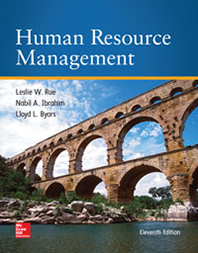Human Resource Management Gaining A Competitive Advantage 10th Edition Noe by Raymond Andrew Noe – Test Bank
Original price was: $55.00.$25.00Current price is: $25.00.
Digital item No Waiting Time Instant Download
- ISBN-10 : 1259578127
- ISBN-13 : 978-1259578120
- Publisher : McGraw Hill; 10th edition (February 12, 2016)
Description
Human Resource Management Gaining A Competitive Advantage 10th Edition Noe by Raymond Andrew Noe – Test Bank
Chapter 03
The Legal Environment: Equal Employment Opportunity and Safety>
True / False Questions
|
1. |
Each branch of the U.S. government (legislature, executive, and judiciary) has its own area of authority, and these areas do not overlap. |
|
2. |
The United States president has the power to veto any law passed by Congress. |
|
3. |
The National Labor Relations Board (NLRB) is a quasi-judicial agency. |
|
4. |
Section 1982 of the Civil Rights Act granted all persons the same property rights as white citizens. |
|
5. |
The benefits of the Pregnancy Discrimination Act are limited to married women who are pregnant. |
|
6. |
Conditions such as obesity and substance abuse are covered under the Americans with Disabilities Act. |
|
7. |
Executive Order 11478 prohibits discrimination based on race, color, religion, sex, and national origin and applies only to federal contractors and subcontractors. |
|
8. |
The Equal Employment Opportunity Commission has three major responsibilities: investigating and resolving discrimination complaints, gathering information, and issuing guidelines. |
|
9. |
Individuals who feel they have been discriminated against may file a complaint with the EEOC at any time after the incident. |
|
10. |
As per the Lilly Ledbetter Fair Pay Act, an “illegal act” occurs when a discriminatory compensation decision is adopted. |
|
11. |
Disparate treatment exists when individuals in similar situations are treated differently and the different treatment is based on an individual’s race, color, religion, sex, national origin, age, or disability status. |
|
12. |
In a prima facie disparate treatment case, the defendant in a disparate treatment case has the burden of proving that the plaintiff was wrong in suing him. |
|
13. |
A job qualification based on race, sex, religion, and so on that an employer asserts is a necessary qualification for the job is known as a bona fide occupational qualification. |
|
14. |
In a mixed-motive case, the plaintiff acknowledges that some discriminatory motive existed but argues that the same hiring decision would have been reached even without the discriminatory motive. |
|
15. |
Under the four-fifths rule, disparate treatment occurs if the hiring rate of a minority group is less than 45 percent of the hiring rate for the majority group. |
|
16. |
The standard deviation rule uses the mode of the distribution to determine disparate impact. |
|
17. |
Reasonable accommodation simply requires an employer to refrain from committing discriminatory acts. |
|
18. |
Under disability claims, the plaintiff must show that he or she is a qualified applicant with a disability and that adverse action was taken by a covered entity. |
|
19. |
Title VII of the Civil Rights Act of 1964 provides that employers cannot retaliate against employees for opposing a perceived illegal employment practice. |
|
20. |
Quid pro quo harassment occurs when some kind of benefit or punishment is made contingent on an employee’s submitting to sexual advances. |
|
21. |
Having pictures of naked women posted in the workplace is actionable under Title VII of the Civil Rights Act. |
|
22. |
Affirmative action programs are used to eliminate discrimination in the workplace and increase minority representation. |
|
23. |
The Occupational Safety and Health Act assigned the responsibility for inspecting employers, applying the standards, and levying fines to the Department of Health. |
|
24. |
The provision of the Occupational Health and Safety Act that states that an employer has an overall obligation to furnish employees with a place of employment free from recognized hazards is known as the general duty clause. |
|
25. |
The job hazard analysis technique is a breakdown of each job into basic elements, each of which is rated for its potential for harm or injury. |
Multiple Choice Questions
|
26. |
Which of the following amendments is called the equal protection clause? A. Fourteenth Amendment B. Sixteenth Amendment C. Eighteenth Amendment D. Twentieth Amendment E. Third Amendment |
|
27. |
Which of the following is a part of the U.S. government’s executive branch? A. District courts B. Committee on Indian Affairs C. Select Committee on Ethics D. Congress E. The president |
|
28. |
The legislative branch of the federal government A. functions under the authority and supervision of the president. B. has no say in the appointment of judges by the president. C. consists of the House of Representatives and the Senate. D. enforces the laws that are passed in the United States. E. adjudicates cases pertaining to civil issues. |
|
29. |
The executive branch of the federal government A. consists of bodies such as the Select Committee on Ethics. B. consists of the House of Representatives and the Senate. C. adjudicates criminal cases. D. passes laws such as the Civil Rights Act. E. consists of the president and the many regulatory agencies the president oversees. |





Be the first to review “Human Resource Management Gaining A Competitive Advantage 10th Edition Noe by Raymond Andrew Noe – Test Bank”